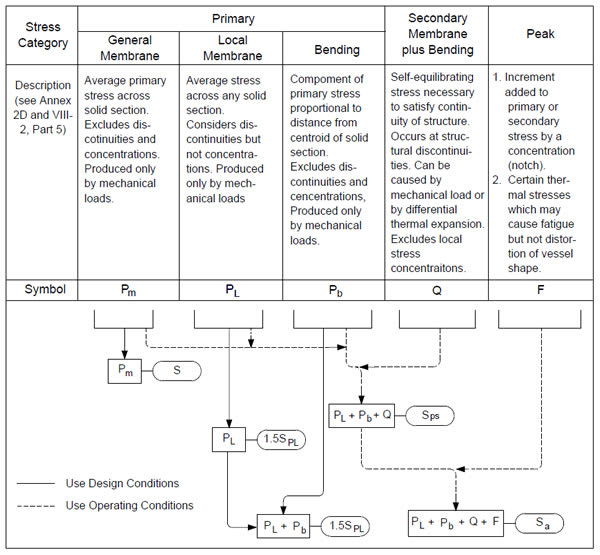-
1
- #1
Ccorvera
Mechanical
- Jul 31, 2024
- 4
Hello all,
I am an early career engineer who has recently been doing a lot of work with pipe stress analysis using CAESAR II software. I have a few questions I was hoping someone could help me with:
1. In the CAESAR load combinations setup window, a coworker advised me that the analysis should use Ec (Piping Elastic Modulus at ambient temperature)for all load cases, including those that include thermal effects. Results of interest for us are generally pipe stress and support reactions, and his reasoning was that this approach would yield conservative results for these values. This reasoning seems to make sense to me, but I wanted to confirm with other knowledgeable engineers. Also, obviously if deflection was a result of interest, using Ec would be non-conservative, correct?
2. What is the difference in classification of load combinations as sustained (SUS) and operational (OPE)? These sound like identical classifications to me (any “operational” load seems to me like it would also be “sustained”). Any place in the code I can look at where these terms are defined?
3. I also sometimes work with pressure vessel stress analysis, and I am pretty confused by the stress classifications (membrane, bending, “linearly varying”, secondary, etc), as well as the process of stress linearization. Does anyone know of a good resource to teach myself these concepts?
Any help on any of these would be greatly appreciated.
I am an early career engineer who has recently been doing a lot of work with pipe stress analysis using CAESAR II software. I have a few questions I was hoping someone could help me with:
1. In the CAESAR load combinations setup window, a coworker advised me that the analysis should use Ec (Piping Elastic Modulus at ambient temperature)for all load cases, including those that include thermal effects. Results of interest for us are generally pipe stress and support reactions, and his reasoning was that this approach would yield conservative results for these values. This reasoning seems to make sense to me, but I wanted to confirm with other knowledgeable engineers. Also, obviously if deflection was a result of interest, using Ec would be non-conservative, correct?
2. What is the difference in classification of load combinations as sustained (SUS) and operational (OPE)? These sound like identical classifications to me (any “operational” load seems to me like it would also be “sustained”). Any place in the code I can look at where these terms are defined?
3. I also sometimes work with pressure vessel stress analysis, and I am pretty confused by the stress classifications (membrane, bending, “linearly varying”, secondary, etc), as well as the process of stress linearization. Does anyone know of a good resource to teach myself these concepts?
Any help on any of these would be greatly appreciated.


